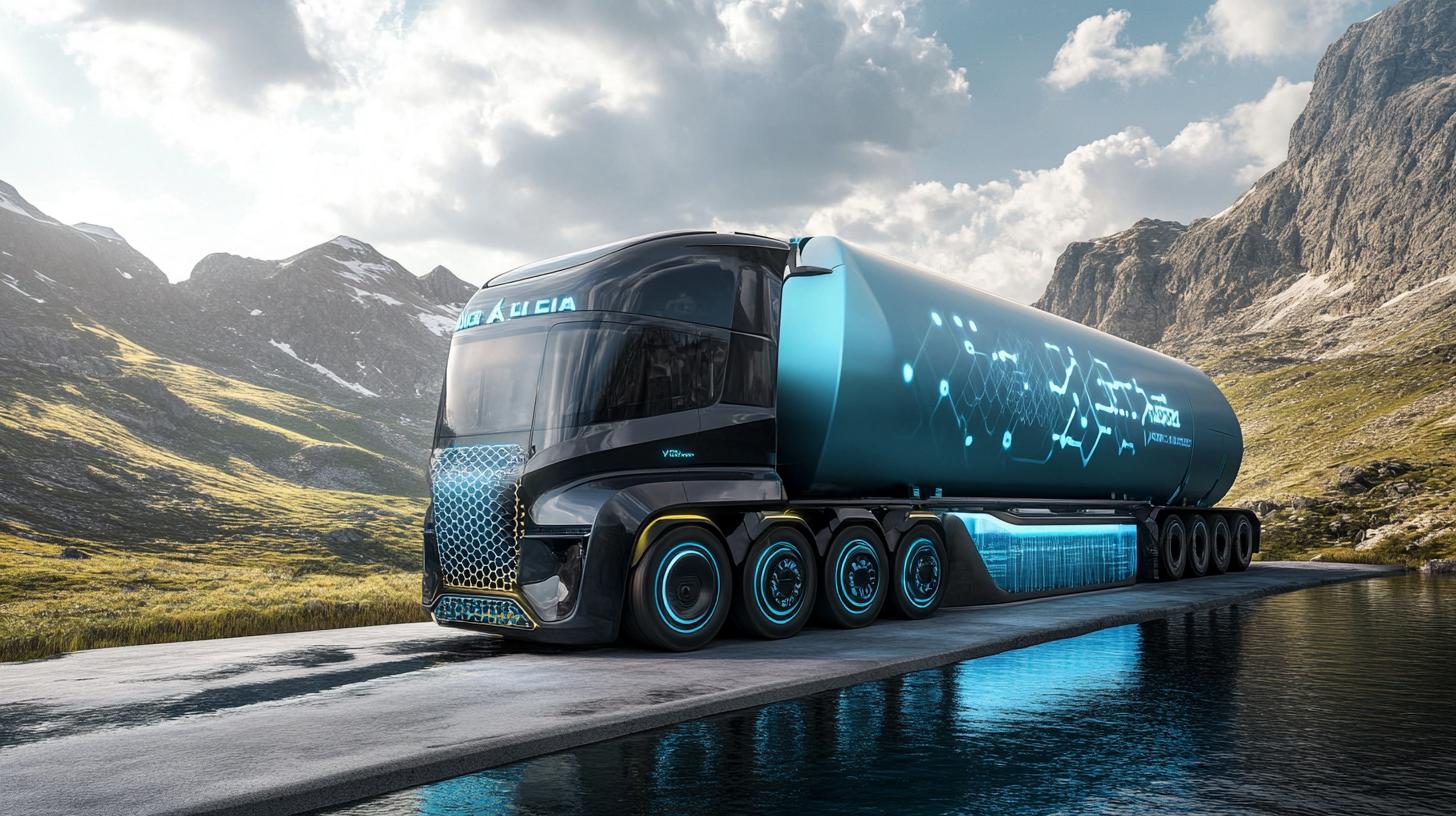In an ambitious leap towards sustainable energy, Test-Fuchs, SFC Energy, and Auto Group unveil the H2Genset, revolutionizing the landscape of mobile power. This cutting-edge hydrogen-powered generator, designed to be trailer-mounted, is set to redefine how electric vehicles are charged, offering a versatile and mobile power solution.
Austrian Airlines stands at the forefront of this innovation, incorporating the H2Genset on Vienna’s airport apron. This deployment is instrumental in enhancing the charging infrastructure for the airport’s fleet of electric vehicles, with the unit capable of delivering both 230 V and 400 V AC. The use of hydrogen, despite its current reliance on fossil fuels, provides a noteworthy benefit where rapid refueling and lightweight power sources are crucial.
The H2Genset is not just limited to airport operations. Its adaptability makes it an excellent option for off-grid energy requirements at construction sites, where it can recharge not only electric cars but also operate essential machinery. Additionally, it can serve as a substitute power source for existing EV charging stations, ensuring seamless operations in unforeseen circumstances.
Demonstrating its flexibility, the H2Genset played a pivotal role at Vienna’s Donauinselfest—a premier music festival. Here, it powered mobile transmitters, facilitating seamless connectivity for thousands of festival-goers eager to share their experiences online.
Emphasizing its commitment to hydrogen technology, Austrian Airlines is also experimenting with hydrogen-powered solutions aboard an Airbus A320. This initiative marks a significant step in exploring the potential of hydrogen in aviation, spearheaded by advanced frequency converters from Austria’s Dynell. This collaboration marks a new era in sustainable energy applications, challenging the traditional dynamics of power generation.
Could Hydrogen-Powered Generators Change the Future of Energy?
The revolution of portable hydrogen-powered generators, such as the H2Genset, presents exciting possibilities beyond electrical vehicle charging. While the recent implementation by Austrian Airlines at Vienna’s airport is widely discussed, the potential impact of these generators on various industries and daily life is just as significant.
How Does This New Technology Influence Global Carbon Footprints?
While hydrogen generation still largely depends on fossil fuels, industry specialists argue that the transition to green hydrogen—produced from renewable resources—is on the horizon. The versatility of the H2Genset goes beyond immediate uses. In developing regions where traditional power infrastructure is lacking or unstable, such mobile units could provide critical reliability and sustainability. The adaptability of hydrogen as a fuel means it could be produced locally, reducing reliance on imported fossil fuels and fostering energy independence. Countries investing in hydrogen infrastructure could see a decrease in carbon footprints, aligning with long-term climate goals.
Challenges and Controversies: Is Hydrogen Truly Sustainable?
The excitement around hydrogen power doesn’t come without controversy. One primary concern revolves around the sustainability of hydrogen production. Though regarded as a clean energy carrier, the production of hydrogen is energy-intensive. Currently, a significant amount of hydrogen is derived from natural gas—a process that emits greenhouse gases. The challenge lies in scaling up green hydrogen production, which involves electrolysis powered by renewable energy sources like wind or solar. Stakeholders in the energy sector are questioning the feasibility and cost-effectiveness of this transition.
Beyond Vehicles: How Could H2Genset Impact Communities?
Beyond their application in electric vehicle charging, these generators could be transformative for remote communities or in disaster relief scenarios. During natural disasters, when traditional power sources are compromised, H2Gensets can swiftly restore power. Their operational independence and portability make them ideal for delivering essential energy to emergency services or displaced populations. By potentially lowering the cost and increasing the accessibility of sustainable energy, hydrogen generators could play an integral role in improving life quality in underserved areas.
From Industrial to Personal Use: Can Hydrogen Generators Go Mainstream?
While industrial applications are the current focus, could we see a future where portable hydrogen generators become as common as household generators? For DIY enthusiasts and those living in areas prone to power outages, hydrogen generators could offer a cleaner, quieter solution than conventional gas generators. The widespread adoption would depend on advancements in safe hydrogen storage solutions, consumer affordability, and the availability of green hydrogen.
What’s Next for Hydrogen in the Energy Sector?
The journey toward mainstream hydrogen adoption requires international collaboration, extensive research, and policy support. Policies aimed at reducing greenhouse gas emissions could drive investment and innovation in hydrogen technology. Moreover, as energy companies and governments push for hydrogen infrastructure, we may see breakthroughs in efficiency and affordability, addressing the current challenges this promising technology faces.
For more information on hydrogen energy and sustainable technology, visit energy.gov. Explore the latest advancements at hydrogen.energy.gov as organizations strive to make hydrogen power accessible for all.


